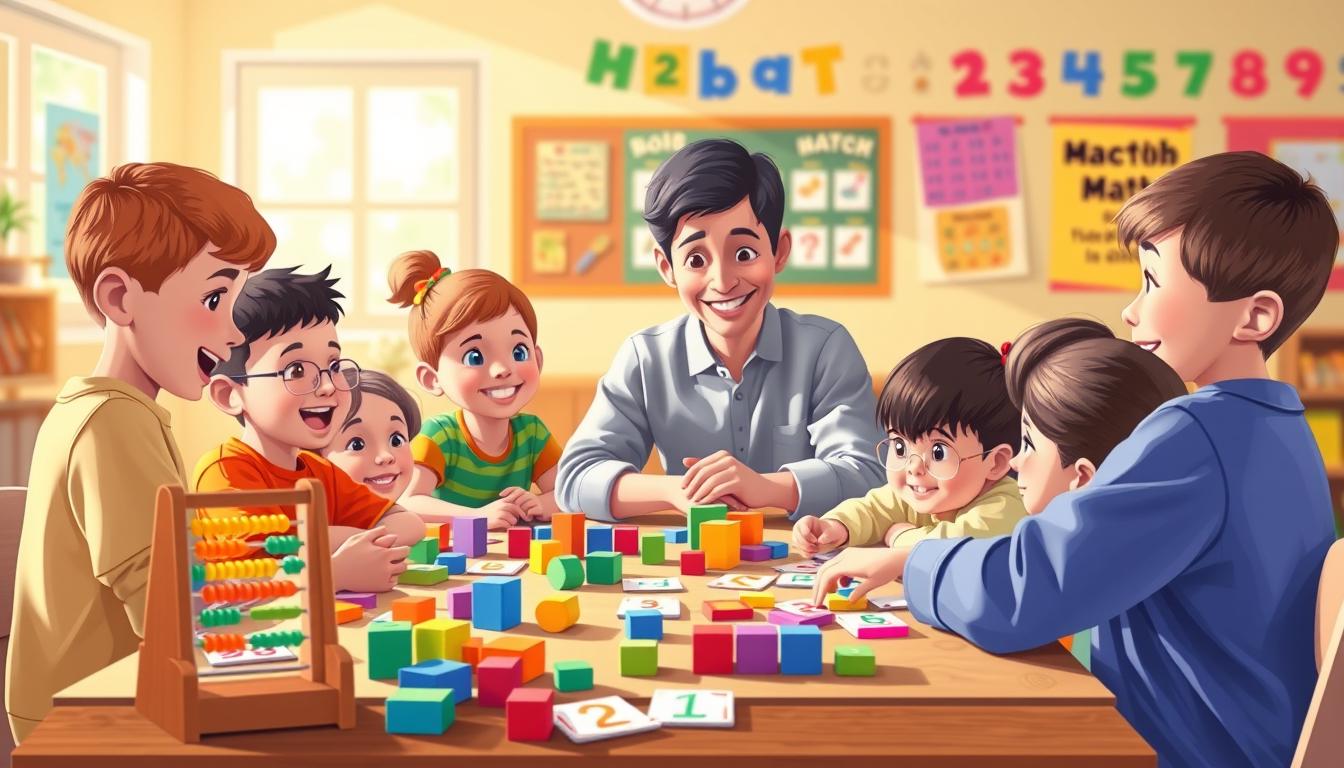Can coding and math skills be developed through a fun, interactive game? The answer is yes, and we’re here to show you how to create a simple math game that does just that.
Learning to code and understanding math concepts can be a challenge for kids, but with the right tools and guidance, it can become an enjoyable experience. In this guide, we’ll walk you through the process of building a math game that’s both entertaining and educational.
By following our step-by-step tutorial, you’ll be able to create a game that teaches kids valuable math skills while they have fun. Let’s get started!
Key Takeaways
- Understand the basics of coding for children
- Learn how to create a simple math game
- Develop problem-solving skills through interactive coding
- Enhance math skills through a fun, game-based approach
- Follow a step-by-step guide to building a math game
Why Coding Math Games Benefits Children’s Learning
By coding math games, children can improve their problem-solving skills and mathematical understanding. This interactive approach to learning combines fun with education, making complex concepts more accessible.
Educational Benefits of Interactive Math Games
Interactive math games offer numerous educational benefits, including enhanced engagement and personalized learning experiences. They make learning math more enjoyable and effective.
Some key benefits include:
- Improved understanding of mathematical concepts
- Enhanced problem-solving skills
- Better retention of information
How Coding Enhances Problem-Solving Skills
Coding teaches children to break down problems into manageable parts, a skill crucial for math and other areas of life. It’s an essential part of a coding tutorial for young learners.
For instance, coding a math game requires children to think logically and anticipate various outcomes, thereby enhancing their problem-solving abilities.
| Skill | Description | Benefit |
|---|---|---|
| Logical Thinking | Breaking down problems into smaller steps | Improved problem-solving |
| Creativity | Designing game elements and storylines | Enhanced creativity and engagement |
“Coding is the new literacy. It’s not just about coding, it’s about thinking, it’s about problem-solving, it’s about creativity.”
– said by Maria Ressa, a renowned journalist and educator. This quote highlights the importance of coding in modern education.
What You’ll Need Before Getting Started
Before diving into creating a simple math game for kids, it’s essential to understand the prerequisites. To start coding, you’ll need a few basic tools and some fundamental knowledge.
Required Software and Tools
To begin, you’ll need a computer with a code editor or an Integrated Development Environment (IDE). Popular choices for kids include Scratch and Visual Studio Code. You may also want to install a web browser to test your game.
Basic Knowledge Prerequisites
A basic understanding of HTML, CSS, and JavaScript is necessary for creating a math game. Don’t worry if you’re new to coding; there are many resources available online to help you get started.
Setting Up a Kid-Friendly Coding Environment
To make coding more engaging for kids, consider using a kid-friendly coding environment like Code.org or Scratch. These platforms provide a visual interface that makes it easier for children to understand coding concepts.
| Tool/Software | Description |
|---|---|
| Visual Studio Code | A popular code editor for beginners and professionals. |
| Scratch | A kid-friendly coding platform developed by MIT. |
| Code.org | A non-profit organization offering coding tutorials and resources. |

Planning Your Math Game Concept
Before diving into coding, it’s essential to plan your math game concept, focusing on age-appropriate math concepts and engaging game mechanics. A well-planned game not only captivates young learners but also ensures they derive educational value from it.
Choosing Age-Appropriate Math Concepts
Selecting the right math concepts is crucial. For younger kids, basic addition and subtraction might be appropriate, while older kids might benefit from more complex operations like multiplication, division, or even fractions. Consider the skill level and curriculum requirements of your target age group.
Designing Engaging Game Mechanics
Game mechanics play a vital role in keeping players engaged. You can incorporate elements like timed challenges, point systems, or level progression to make the game exciting. The key is to strike a balance between fun and educational content.
| Age Group | Math Concepts | Game Mechanics |
|---|---|---|
| 6-8 years | Basic Addition, Subtraction | Timed Challenges, Point System |
| 9-12 years | Multiplication, Division | Level Progression, Leaderboards |
Creating a Simple Storyboard
A simple storyboard helps visualize the game’s flow and structure. Sketch out the different screens, such as the home screen, game screen, and results screen. This step is crucial for identifying potential issues and making necessary adjustments before you start coding.

By carefully planning your math game concept, you set the foundation for a successful educational game coding guide that is both fun and informative for young learners.
Setting Up Your Development Environment
Before diving into coding a math game, it’s essential to set up your development environment properly. This step is crucial for a beginner programming project like easy game development for kids.
Installing Necessary Software
To start, you’ll need to install the necessary software. For coding a simple math game, you will need a code editor or IDE (Integrated Development Environment) like Visual Studio Code. Additionally, ensure you have the latest version of a web browser installed to test your game.
Configuring Your Workspace
After installing the necessary software, configure your workspace. Organize your files and folders in a logical manner. This will help you navigate your project efficiently. Consider creating separate folders for HTML, CSS, and JavaScript files.
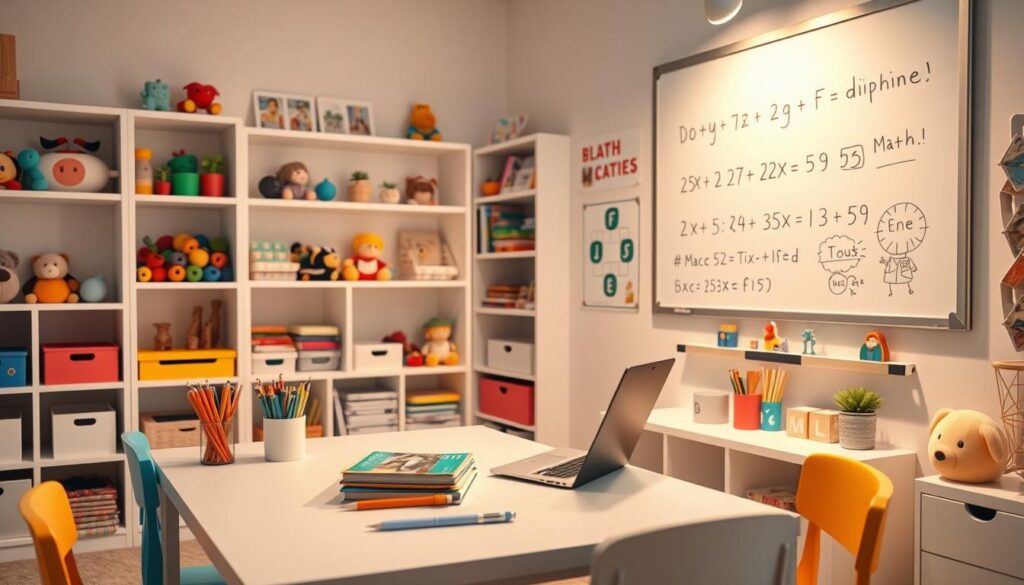
Creating Your Project Files
Create the basic files required for your project, such as index.html, style.css, and script.js. These files will form the backbone of your math game. By following these steps, you’ll be well-prepared to start coding your game.
How to Build a Simple Math Game with Code – Step by Step for Kids
Let’s dive into the world of coding by building a simple math game that’s both fun and educational for kids. This step-by-step guide will walk you through creating the basic HTML structure, setting up CSS for visual appeal, and writing your first JavaScript functions.
Creating the Basic HTML Structure
The foundation of your math game starts with HTML. You’ll need to create a basic structure that includes a title, a section for the math problems, and an input field for answers. Here’s a simple example:
<!DOCTYPE html>
<html>
<head>
<title>Math Game</title>
</head>
<body>
<h1>Math Game</h1>
<div id=”mathProblem”></div>
<input type=”text” id=”answer” />
<button onclick=”checkAnswer()”>Submit</button>
</body>
</html>
This HTML code sets up a basic page with a title, a div to display math problems, an input field for the user to enter their answer, and a button to submit the answer.
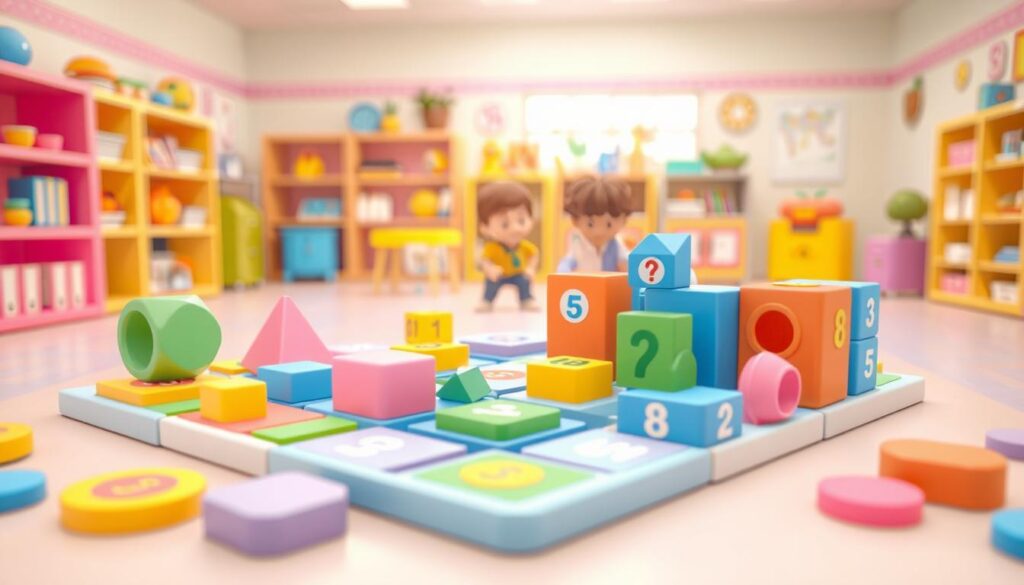
Setting Up CSS for Visual Appeal
CSS is used to make your game visually appealing. You can change colors, fonts, and layout to make the game more engaging. For example, you can center the content and change the font to a child-friendly style.
body {
font-family: Arial, sans-serif;
text-align: center;
}
#mathProblem {
font-size: 24px;
margin-bottom: 20px;
}
This CSS code centers the content and makes the math problem text larger and more readable.
Writing Your First JavaScript Functions
JavaScript is where the magic happens. You’ll write functions to generate math problems, check answers, and provide feedback. Here’s a simple example of a function that generates a math problem:
function generateMathProblem() {
let num1 = Math.floor(Math.random() * 10);
let num2 = Math.floor(Math.random() * 10);
let problem = num1 + ” + ” + num2;
document.getElementById(“mathProblem”).innerHTML = problem;
}
This JavaScript function generates two random numbers and displays their sum as a math problem on the screen.
By following these steps, you’ll have a basic math game up and running. You can then expand on this foundation by adding more features, such as scoring, different types of math problems, and more.
Implementing the Game Interface
Creating an engaging game interface is crucial for a children’s math game tutorial. The interface is what makes the game interactive and enjoyable for kids.
When designing the game interface, several factors come into play. The goal is to make it intuitive and appealing to young users.
Designing a Kid-Friendly UI
A kid-friendly UI should be simple, intuitive, and visually appealing. It involves choosing the right fonts, colors, and layout that can capture a child’s attention without being overwhelming.
For an educational game coding guide, it’s essential to ensure that the UI elements are large enough and spaced well for little fingers to navigate easily.
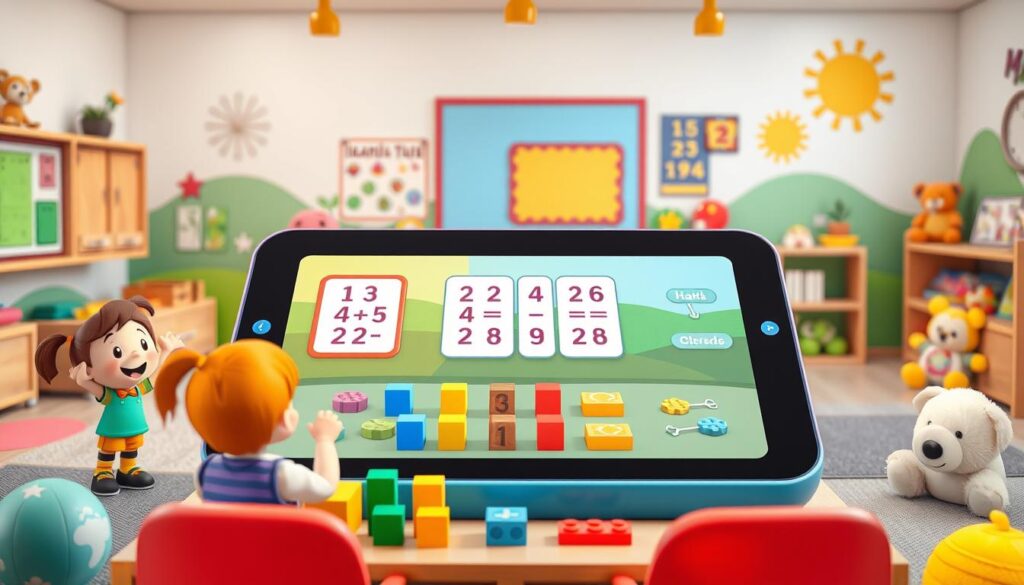
Adding Visual Elements and Colors
Visual elements and colors play a crucial role in making the game appealing. Bright, kid-friendly colors can stimulate a child’s interest in the game.
Using a combination of images, icons, and animations can enhance the learning experience. For instance, using visual cues to indicate correct or incorrect answers can make the game more engaging.
| Element | Purpose | Example |
|---|---|---|
| Colors | Attract attention, differentiate elements | Bright buttons for answers |
| Icons | Visual cues for actions or results | Checkmarks for correct answers |
| Animations | Enhance user experience, provide feedback | Confetti for completing levels |
Creating Input Fields and Buttons
Input fields and buttons are crucial for user interaction. For easy game development for kids, these elements should be designed to be responsive and easy to use.
For example, large, clearly labeled buttons for submitting answers or navigating through the game can improve the user experience. Ensuring that these elements are accessible and understandable is key to a successful children’s math game tutorial.
“The best interface is no interface.” – Golden Krishna
By focusing on simplicity and intuitive design, we can create a game interface that is both fun and educational for kids.
Coding the Math Problem Generator
To make a math game truly interactive, you need to code a robust math problem generator. This component is crucial as it provides the mathematical challenges that kids will solve, making the game both fun and educational.
Random Number Generation
The first step in creating a math problem generator is implementing random number generation. This can be achieved using JavaScript’s Math.random() function. By generating random numbers, you can create a variety of math problems, keeping the game exciting and challenging for kids.
For example, to generate a random number between 1 and 10, you can use the following code:
let randomNumber = Math.floor(Math.random() * 10) + 1;
Creating Different Difficulty Levels
To cater to children of different ages and skill levels, you can create various difficulty levels in your math game. This can be done by adjusting the range of numbers used in the math problems or by introducing different types of operations (addition, subtraction, multiplication, division).
Sample Code for Problem Generation
Let’s look at how you can generate math problems using JavaScript. We’ll cover both addition/subtraction and multiplication/division challenges.
Addition and Subtraction Problems
For addition and subtraction, you can generate two random numbers and then randomly choose between addition and subtraction.
function generateAdditionSubtractionProblem() {
let num1 = Math.floor(Math.random() * 10) + 1;
let num2 = Math.floor(Math.random() * 10) + 1;
let operation = Math.random() > 0.5 ? ‘+’ : ‘-‘;
return `${num1} ${operation} ${num2}`;
}
Multiplication and Division Challenges
Similarly, for multiplication and division, you can follow a similar approach but adjust the operation and possibly the range of numbers.
function generateMultiplicationDivisionProblem() {
let num1 = Math.floor(Math.random() * 10) + 1;
let num2 = Math.floor(Math.random() * 10) + 1;
let operation = Math.random() > 0.5 ? ‘*’ : ‘/’;
return `${num1} ${operation} ${num2}`;
}
By combining these functions, you can create a comprehensive math problem generator that challenges kids in various ways.

| Operation | Difficulty Level | Example Problem |
|---|---|---|
| Addition | Easy | 2 + 2 |
| Subtraction | Medium | 5 – 3 |
| Multiplication | Hard | 6 * 9 |
| Division | Medium | 12 / 4 |
Adding Game Logic and Scoring System
Now that we have the basic structure of our math game in place, it’s time to add the game logic and scoring system. This step is crucial in making the game interactive and fun for young learners.
The game logic involves checking the answers provided by the player and giving appropriate feedback. This can be achieved by comparing the player’s input with the correct answer generated by our math problem generator.
Checking Answers and Providing Feedback
To check answers, we need to write a function that compares the player’s input with the correct solution. If the answer is correct, we display a positive message; otherwise, we show the correct answer. This feedback mechanism is essential for an educational game coding guide as it helps kids learn from their mistakes.
For example, we can use JavaScript to create a simple function that checks the answer and updates the UI accordingly.
Implementing a Point System
A point system motivates players to continue playing and improves their math skills. We can assign points for correct answers and deduct points for incorrect ones. This feature is a key part of easy game development for kids as it makes the game engaging and challenging.
Tracking Progress and Performance
Tracking progress helps players see how they are improving over time. We can display the total score, number of questions answered, and other relevant metrics. For a comprehensive coding tutorial for young learners, it’s essential to include features that help kids track their learning journey.
Code Example for Score Tracking
Here’s a simple example of how to track the score using JavaScript:
let score = 0;
function updateScore(isCorrect) {
if (isCorrect) {
score++;
document.getElementById(‘score’).innerText = ‘Score: ‘ + score;
}
}
This code snippet demonstrates how to increment the score when a player answers correctly and update the display.

By implementing these features, we make our math game more interactive and enjoyable for kids, aligning with the principles of easy game development for kids.
Complete Game Code Example
Let’s examine a comprehensive code example that brings our simple math game to life. This example will include the HTML structure, CSS styling, and JavaScript functionality needed to run the game.
HTML Structure
The HTML structure provides the foundation for our math game. It includes elements such as input fields, buttons, and display areas for questions and feedback.
<!DOCTYPE html>
<html lang=”en”>
<head>
<meta charset=”UTF-8″>
<meta name=”viewport” content=”width=device-width, initial-scale=1.0″>
<title>Simple Math Game</title>
<link rel=”stylesheet” href=”style.css”>
</head>
<body>
<div class=”game-container”>
<h1>Math Game</h1>
<p id=”question”></p>
<input type=”number” id=”answer” />
<button id=”submit”>Submit</button>
<p id=”feedback”></p>
</div>
<script src=”script.js”></script>
</body>
</html>
CSS Styling
CSS styling enhances the visual appeal of our game, making it more engaging for kids. It centers the game container and styles the buttons and input fields.
.game-container {
text-align: center;
margin-top: 50px;
}
#answer {
font-size: 24px;
padding: 10px;
}
#submit {
padding: 10px 20px;
font-size: 18px;
background-color: #4CAF50;
color: white;
border: none;
cursor: pointer;
}
#submit:hover {
background-color: #3e8e41;
}

JavaScript Functionality
JavaScript adds interactivity to our math game. It generates random math problems, checks the user’s answers, and provides feedback.
document.addEventListener(‘DOMContentLoaded’, function() {
const questionElement = document.getElementById(‘question’);
const answerInput = document.getElementById(‘answer’);
const submitButton = document.getElementById(‘submit’);
const feedbackElement = document.getElementById(‘feedback’);
let currentQuestion = generateQuestion();
questionElement.textContent = currentQuestion;
submitButton.addEventListener(‘click’, function() {
const userAnswer = parseInt(answerInput.value, 10);
const correctAnswer = eval(currentQuestion); // Simple eval for demonstration
if (userAnswer === correctAnswer) {
feedbackElement.textContent = ‘Correct!’;
} else {
feedbackElement.textContent = ‘Try again!’;
}
});
function generateQuestion() {
const num1 = Math.floor(Math.random() * 10);
const num2 = Math.floor(Math.random() * 10);
return `${num1} + ${num2}`;
}
});
How to Run the Complete Game
To run the complete game, save the HTML code in an index.html file, the CSS code in a style.css file, and the JavaScript code in a script.js file. Open the index.html file in a web browser to play the game.
As Scratch founder Mitch Resnick once said, “The goal is to empower kids to be creators, not just consumers, of technology.” This simple math game is a step towards that goal, teaching kids coding concepts while making learning fun.
Extending Your Math Game with Advanced Features
Now that you have a basic math game, it’s time to take it to the next level with advanced features. These enhancements will not only make the game more engaging but also provide a more challenging experience for young learners.
Adding Timed Challenges
One way to make your math game more exciting is by adding timed challenges. This feature requires players to solve math problems within a certain time limit, adding an element of urgency to the game. To implement this, you can use JavaScript’s setInterval function to create a countdown timer.
Creating Multiple Game Modes
Offering multiple game modes can cater to different learning styles and preferences. For example, you could have a “relaxed” mode with no time limits and a “challenged” mode with timed challenges. This can be achieved by creating different configurations for your game settings.
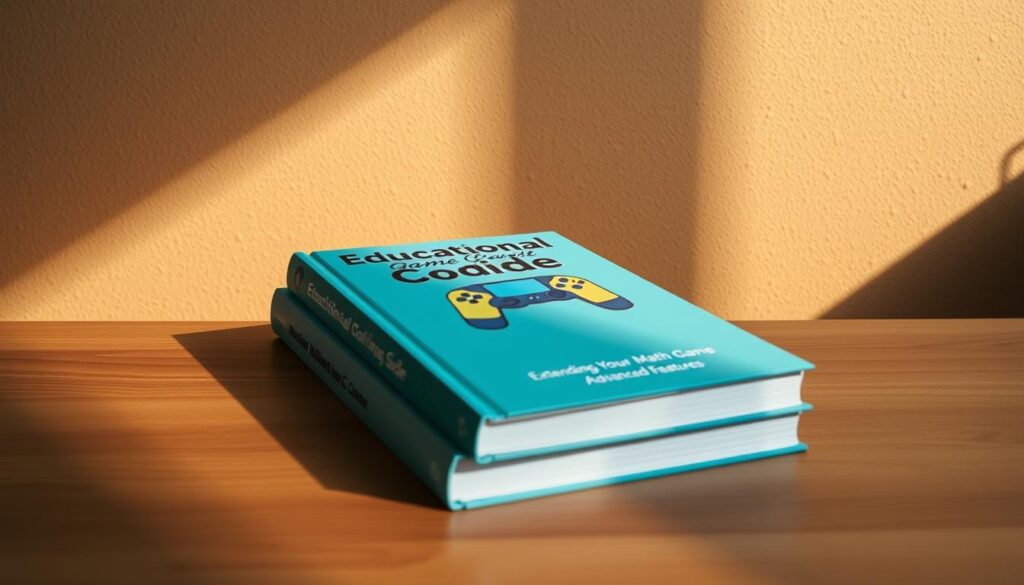
Saving High Scores
To encourage competition, you can implement a feature to save high scores. This can be done using local storage in the browser, where the highest score achieved by a player is stored. You can display the high score on the game interface to motivate players.
Making Your Game Responsive for Different Devices
Ensuring that your game is responsive means it will work well on various devices, from desktops to smartphones. This can be achieved by using CSS media queries to adjust the layout and design according to the screen size.
By incorporating these advanced features, you can significantly enhance the learning experience and engagement of your math game, making it a more effective educational tool.
Conclusion
Now that you’ve completed this children’s math game tutorial, you’re ready to start creating your own math games. You’ve learned the basics of game development and coding, and you’re equipped with the skills to make easy game development for kids a fun and engaging experience.
A like this one is just the beginning. You can continue to build on your skills by experimenting with different game mechanics, adding new features, and creating more complex levels. The possibilities are endless, and the skills you develop will serve you well in your future coding endeavors.
As you continue to develop your skills, remember to keep your games fun and engaging. Use bright colors, exciting sounds, and challenging levels to keep players motivated. With practice and patience, you’ll become a proficient game developer, and your creations will inspire others to learn and have fun.
Keep coding, and most importantly, have fun making your own math games!
